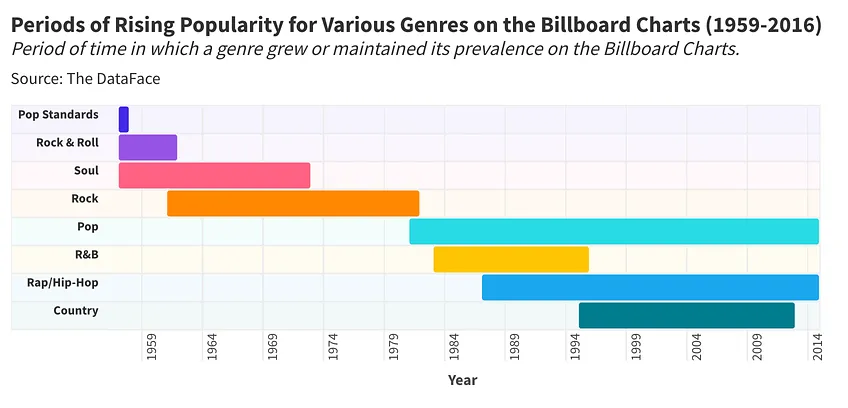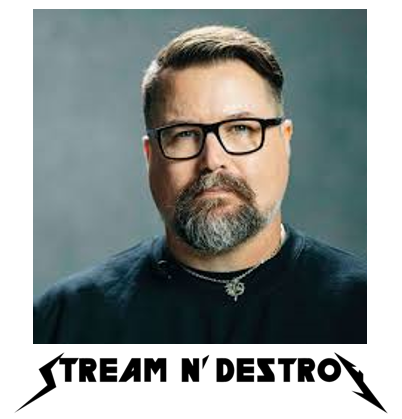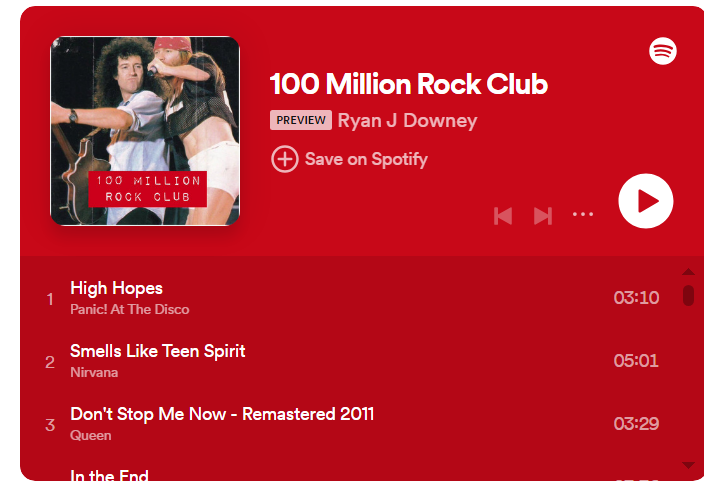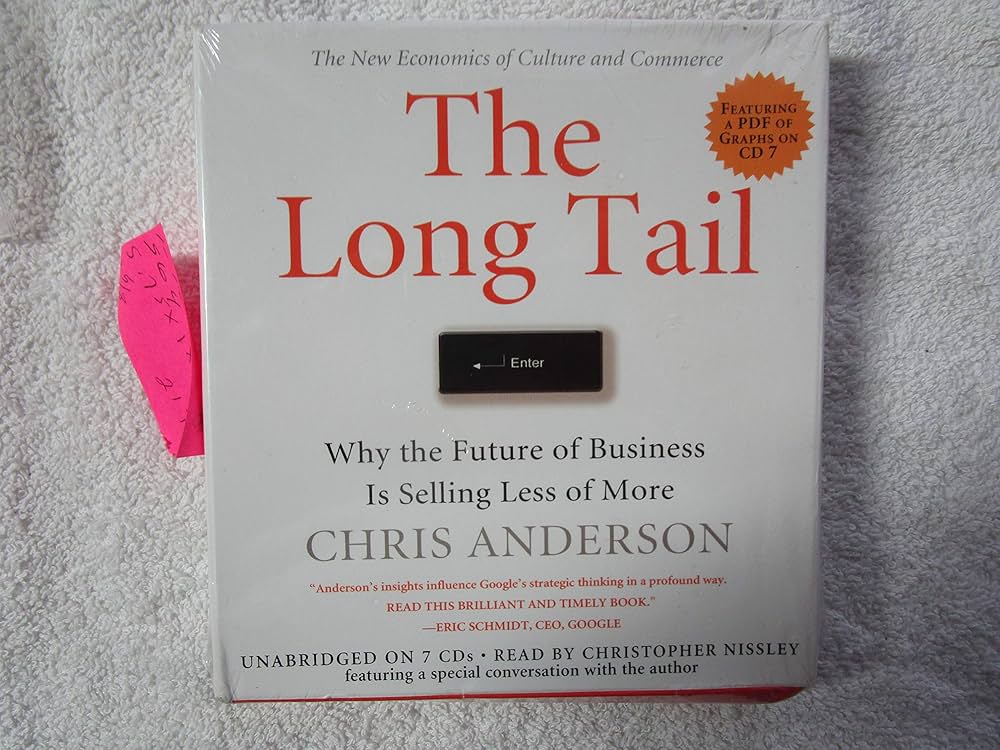
Consider yourself warned.
This post is a complete and total “nerd out.” It’s a deep dive into data. But before you hit “delete,” let me remind you the goal of this post is to creatively use numbers – specifically “data visualization” and good old logic – to make the case whether rock is dead. Although another way to think about is it to imagine it actually died a long time ago, and maybe we just didn’t get the memo.

Daniel Parris, author of Stat Significant
At the center of this conversation is Daniel Parris, a self-described data journalist and pop culture lover. His Substack is called Stat Significant, and it’s a fascinating look at all the stuff we consume, and the numbers that help explain it. Westwood One guru, Pierre Bouvard, emailed me a wonderful detailed Parris article called “When Did Rock & Roll Die? A Statistical Analysis” written late last month.
JacoBLOG readers know I’m a sucker for this stuff – serious analytical looks at not-so-serious topics. Like the original Freakanomics, cleverly put together data can help us better understand our jobs and the industry we work in.

Andrew Van Dam – WaPo’s Data Department
I also enjoy the Washington Post’s Department of Data column headed up Andrew Van Dam. While less pop culture-centric than Stat Significant, I wrote a post last May – “Americans REALLY Love Classic Rock” – featuring a YouGov study they covered about the popularity of music genres over time. I wasn’t surprised to see Daniel Parris also quotes that same research (chart included below).
Of course, data isn’t always illuminating. It fact, it can also be misleading. More on that later in this post.
Parris’ analysis is clever, provocative, well-written, and entertaining – all building blocks in a column that is essentially all about numbers. (Spoiler alert: Parris lays part of the blame for rock’s decline on the Lumineers’ hit, “Hey Ho.”)
The chart below, based on genre coding by The DataFace overlayed on Billboard charting data shows that rock (the orange bar) burned bright from the early ’60s until the early ’80s before being usurped by other genres, including Pop, Hip-Hop, and Country.

Parris credits classic rock (or “dad rock” as he calls it) with carrying rock’s torch years after the music actually peaked. And of course, the aforementioned YouGov data Van Dam quoted last May in a post called “Americans REALLY Love Classic Rock” shows the staying power of this music as a still-popular sub-genre of rock, especially among the 45 and older crowd:

Parris slices and dices his data in different permutations, including an analysis that breaks down the preference differences between critics and consumers, as well as other data variants that tell you he’s thinking about how to best understand how music ebbs and flows over time.
It’s fascinating stuff, but I thought rather than me simply breaking down this Stats Significant article for you, I’d turn to still another analyst – Ryan Downey. Mike Stern made me aware of Ryan (pictured), a renowned music journalist who has written for and contributed to MTV, Billboard, the Hollywood Reporter, MSNBC, and a host of others.

Ryan Downey
His “Stream N’ Destroy” column on Substack is incisive and interesting especially for radio people whose streaming acumen may simply be lagging. Many of us have seen radio stations go sideways (or south) by misinterpreting streaming data. So often, it is one more contradictory variant among callout, gold tests, and M Scores.
Ryan’s “100M Rock Club” article written last month is the “rock response” to Spotify’s official playlist called the “Billions Club,” cataloging every song that hits the one billion streams threshold. As you can imagine, rock songs aren’t all that plentiful on that list, so Ryan created the “100 Million Rock Club” which is self-explanatory. It’s a cool playlist you can check out for yourself.
I figured Ryan was the guy who could not only interpret Daniel Parris’ assumptions about rock, but also provide streaming insights as well. Here’s our interview:
Fred: I’d love your take on the Stat Significant article. As someone who chronicles the rock world, what was your reaction when you read it?
Ryan: It’s an interesting read, to be sure.
 But I don’t equate “lack of cultural dominance” with “death.”
But I don’t equate “lack of cultural dominance” with “death.”
As the writer points out, there are a multitude of genres to choose from and plenty of places to get them now. Measuring things by a single metric, like radio airplay or syncs, is an incomplete picture.
U2, Coldplay, and The Eagles are all in the Top 10 highest-grossing tours of the last quarter. Fall Out Boy, Blink-182 and TOOL are all in the Top 50. And I’d argue that a lot of the dominant country music has more in common with “rock” than old-school country.
In 2019, there was a report that heavy metal was the fastest-growing music genre in both streaming and downloads. The report came from distribution platform TuneCore, which said the genre grew year-over-year by 154%, resulting in breathless music headlines.
The Doors recorded “Rock Is Dead” in 1969. The persistence of the continued cyclical debate around this notion, to me, proves otherwise.
Fred: Following up on your “100M Rock Club” article, what’s your thought on the correlation between streaming and radio airplay? Sometimes they dovetail nicely and other times what’s streaming doesn’t seem to work on the radio – or vice versa. What have you seen?
Ryan: Radio is another metric that, while important, offers an incomplete picture of the genre’s health all by itself.
For better or worse, the rock radio format remains the domain of a relatively specific ecosystem of labels, program directors, DJs, and marketing teams. Some bands with “rock hits” can’t draw anyone to a headlining gig or generate decent streams. Others with colossal streaming numbers aren’t played on the radio.
headlining gig or generate decent streams. Others with colossal streaming numbers aren’t played on the radio.
Fred: Why aren’t today’s new rock acts cutting through in popular culture like the classic rock bands did?
Ryan: Linkin Park, Muse, Twenty One Pilots, Panic! At The Disco, AWOLNATION, Imagine Dragons, Paramore, Fall Out Boy, Disturbed, System of a Down, My Chemical Romance, Godsmack, Five Finger Death Punch — these are just a few artists that come to mind who have had considerable successes in the last 25 years.
For some perspective, Kendrick Lamar is more prominent than these acts by a lot of metrics. But would we consider Kendrick “mainstream?”
When you look at Taylor Swift, that exception proves the rule.
 “The Long Tail” (as described by Wired EIC Chris Anderson in his book of the same name) has eliminated the “mainstream” of pop culture.
“The Long Tail” (as described by Wired EIC Chris Anderson in his book of the same name) has eliminated the “mainstream” of pop culture.
There are more than three or four TV channels, a handful of print magazines, radio stations, and a few local record stores. A seemingly endless supply of music and “content” is available to almost everyone at any time. That means that even a “hit” TV show, spoken about around the water cooler, will be seen by only a sliver who watched traditional TV hits when they aired.
Growing up as a Generation X person, everybody I knew watched or was at least aware of shows like Seinfeld and Friends, and classic TV shows like Gilligan’s Island in syndication.
Game Of Thrones was huge. But my dad has never seen it and neither have my kids.
Fred: What’s your thought about there being so many classic rock bands in the 100M club despite those songs coming out long before online was any sort of a consideration? We continue to see young people adopting classic rock music year after year. Do you see the same thing, and do you have any thoughts on why that happens?
Ryan: There are a few different factors. One is folks moving away from their record and CD collections to their Spotify app, where they pull up the exact songs they’ve loved — or their parents loved — for years, rather than putting a CD in the disc changer or a record on a turntable.
There are also syncs in movies, TV shows, and games. Think how synonymous AC/DC became with Iron Man, Led Zeppelin with Thor, and “Master of Puppets” with Stranger Things.
(Some more modern songs that come to mind include Fall Out Boy’s “Centuries” in Big Hero 6 and Dropkick Murphys in The Departed.)
There are some other factors suggested in this American Songwriter article, “Why is Classic Rock So Popular? We Asked Four Experts.”
Fred: What cultural forces of today would you say are working for or against new rock acts?
Ryan: There is so much competition for our attention — YouTube, social media, and politics – and cutting through the noise is more complicated than ever. On the positive side, the means of creation, production, marketing, and distribution have never been cheaper or more accessible.
marketing, and distribution have never been cheaper or more accessible.
Fred: Do you think Rock will ever have a resurgence to the sort of popularity it had in the Classic Rock era? Is it better if Rock doesn’t have a resurgence? Does it belong in the mainstream?
Ryan: I don’t think so because there is no longer a “mainstream” in the sense of the mainstream Boomers, Generation X, and Millennials grew up experiencing. For example, if you’re into anime, there are countless avenues to soak up that culture while ignoring almost everything else. In high school, everyone I knew could name songs by Michael Jackson, New Kids on the Block, or Nirvana. I don’t know if the “Name Three Songs” game would work with many contemporary artists in today’s high schools, save for Taylor. People are more into their specific interests and less concerned about what’s popular with everyone else.
And that rules! More choices, more art, more opportunities for discovery – these are all great things.
Fred; Ryan, many thanks for sharing your wisdom with our JacoBLOG readers.
Tomorrow, I’ll be featuring a unique talent who is keeping rock alive on YouTube and other online platforms, soon to be available on broadcast radio. It’s an amazing story.
Meantime, sign up for Ryan Downey’s “Stream N’ Destroy” on Substack here.
Originally published by Jacobs Media









